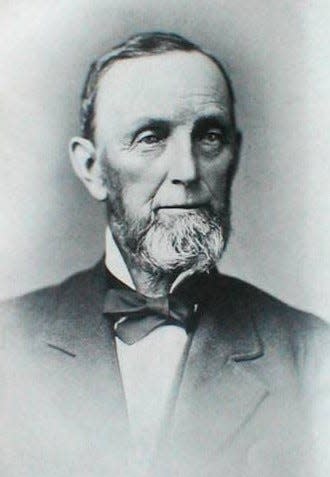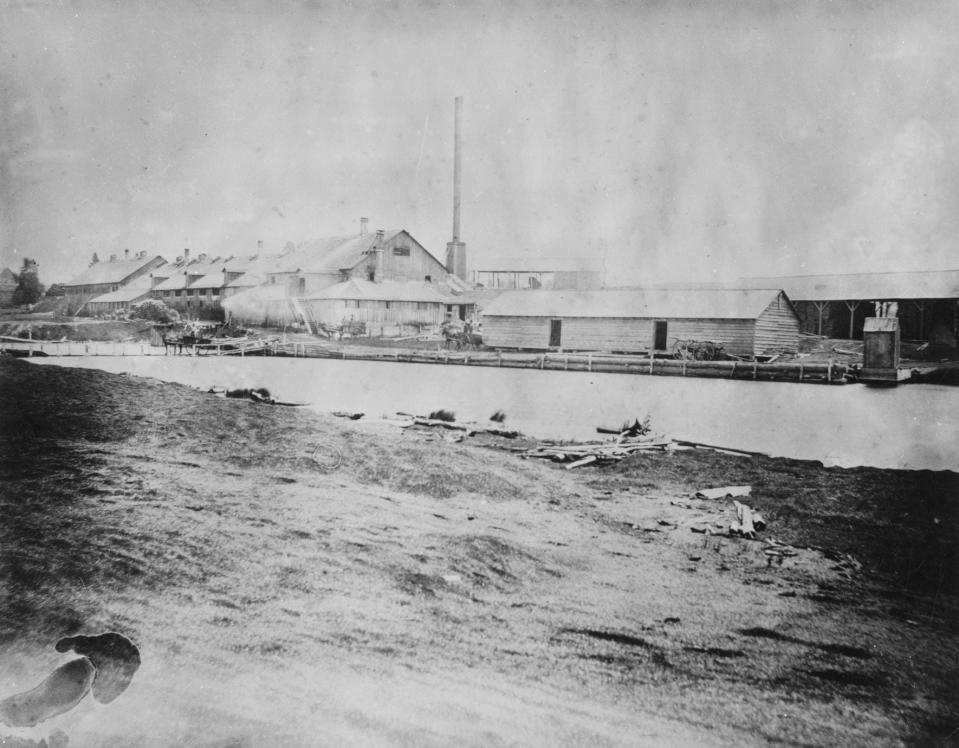Two Rivers' Tannery Road and Tannery School reflect city's early thriving industry
Cyrus Whitcomb was born Nov. 12, 1813, in Vermont. In 1826, his family moved to Onondaga County, New York, where he worked on a farm until the age of 20. In the winter of 1835-1836, he moved to Cazenovia, New York, to work in the tanner and currier’s trade. While there, he married Harriet Eliza Whipple in 1841.

The exhaustion of tanbark in New York state made it necessary to relocate farther west. In 1846, members of the Rufus Allen family, which had operated a tannery in Cazenovia since 1805, came to Milwaukee, along with Edward P. Allis and Cyrus Whitcomb. The firm opened a small leather goods store and by 1850 became known as the Wisconsin Leather Company.
Because of the abundance of eastern hemlock tanbark in northeastern Manitowoc County, 1,200 acres of forest were purchased from the U.S. government for 50 cents per acre. During the winter of 1851, Cyrus Whitcomb came to Two Rivers to supervise construction of a wood-framed, two-story tannery, 270 feet by 50 feet, on the east bank of the Mishicot (East Twin) River in Section 25 of the town of Two Rivers, 1-1/2 miles north of the small lumbering and fishing settlement.
When the tannery opened in May 1851, it was one of the largest in Wisconsin and the Midwest, with 134 vats for tanning 100 hides daily for harness and light stock on the ground floor and extensive drying and storage rooms on the second floor. In 1861, a second, larger tannery, 315 feet by 50 feet, was constructed south of the earlier one, with 150 double vats for tanning 75 hides daily into sole leather. Bricks used for its construction came from Milwaukee.

By 1878, 7,000 tons of tanbark were consumed and 60,000 hides were tanned annually. Most hides were brought from meat-packing houses in Milwaukee and Chicago by boat or team. A steadier supply of hides (some from Texas) was obtained once the Milwaukee, Lake Shore & Western Railroad was completed to Two Rivers in 1873. Tanned hides were returned to Milwaukee, where finished leather goods were sold to Eastern as well as Western markets.
While a house for the Whitcomb family was being built near the tannery, they stayed at a tavern for five weeks. Their home was “very pleasant and nicely furnished, and generally well filled with company.” Cyrus and Harriet had six children: Harriet, Charles, Henry, Emma, Clara and William. The three youngest children were born in Wisconsin.
Cyrus Whitcomb ran a boarding house for tannery workers and operated a store stocked with food and provisions. Besides the tannery, the Milwaukee-based company built two finishing buildings, storage sheds, a boiler room with a 100-foot tall chimney and a 105-feet deep artesian well. Seven houses, a blacksmith shop, horse stables and a 200-foot pier and wharf along the river were also constructed. A school was started about 1852 in a wing of the boarding house.
Mr. Whitcomb took an interest in local politics, serving on the Two Rivers Town Board in 1851, town assessor in 1857, and Board of County Supervisors in 1859. He was also active in the Manitowoc County Agricultural Society organized in 1859, serving as a judge at the 1860, 1861 and 1862 fairs and vice president of the association in 1863.
About 1865, Cyrus Whitcomb purchased a house for his family in Milwaukee, but remained at the tannery with his eldest son Charles, boarding with families for several years. He eventually moved to Milwaukee, where he died at the age of 72 on Dec. 10, 1885. The "Lake Shore Times" observed, “He was a genial and cultured gentleman of the old school, of strict integrity and correct habits.” He is buried at Forest Home Cemetery in Milwaukee.

By the late 1880s, the limited local supply of tanbark was depleted and increased transportation costs for bark from Michigan by boat and rail made the business unprofitable. In 1887, the Wisconsin Leather Company tannery at Two Rivers closed. The chimney was taken down in 1889 and the tannery was destroyed by fire in 1890.
While nothing remains of the once flourishing tannery in Two Rivers, familiar place names remind us of this early industry — Tannery Road, Tannery Bridge, Tannery School and Tannery Cemetery.
Bob Fay is a historian and former executive director of the Manitowoc County Historical Society.
Read more history:
Lillian Chloupek: She became the first woman to serve as Manitowoc County superintendent of schools in 1920 and was re-elected to two more terms
Surprise package: Manitowoc County museum received a surprise package containing never-before-seen photos. Here's what was inside.
Sexton's house: Sexton’s house at Manitowoc cemetery dates to 1878. Here’s its history and who has lived in it over the years.
This article originally appeared on Manitowoc Herald Times Reporter: Two Rivers was home to thriving Wisconsin Leather Company tannery

